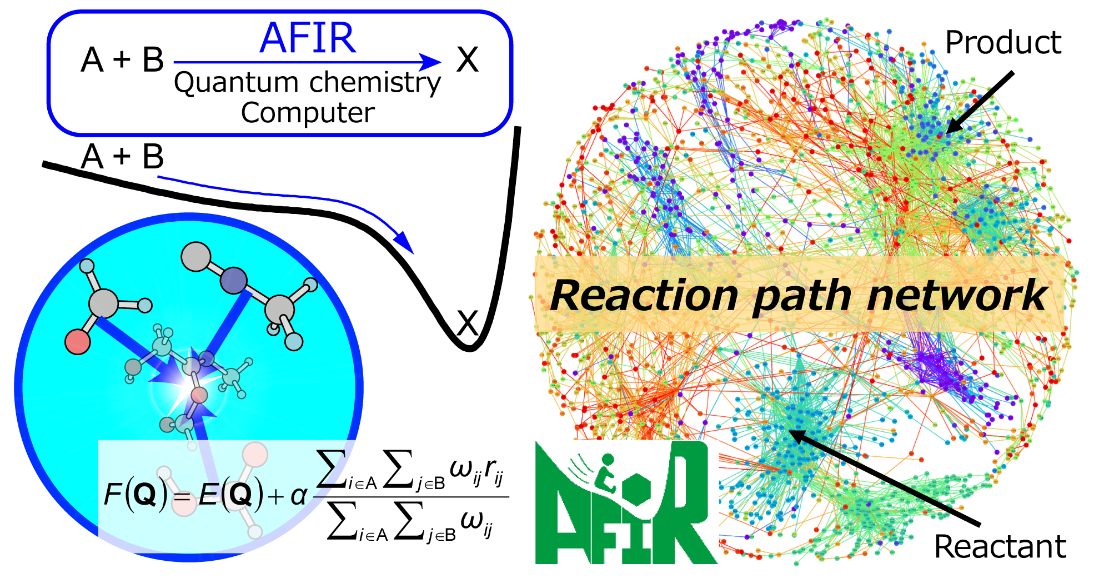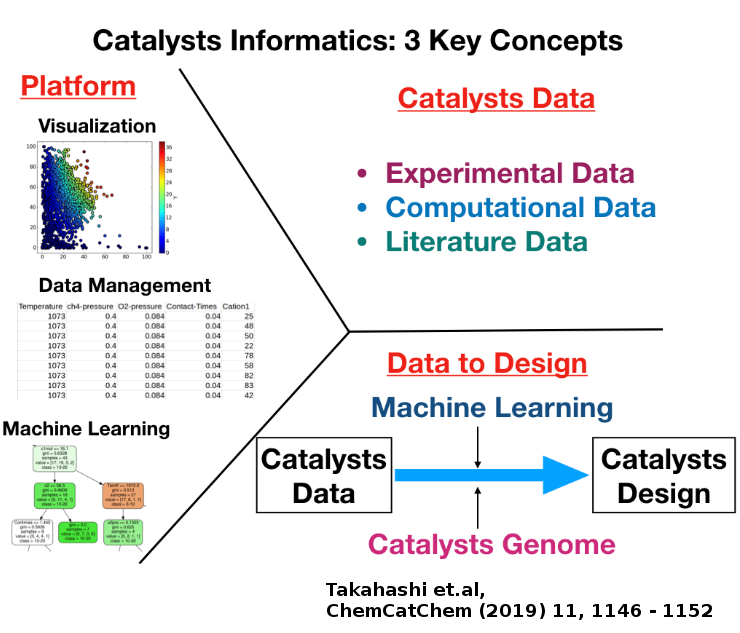Introduction of Research
Development and Application of Automated Reaction Path Search Method
Based on quantum chemical calculations, we have developed a technology “automated reaction path search method” that automatically predicts paths of chemical reactions on computers. The automated reaction path search method enables us to understand the mechanism of complex chemical reactions and to predict unknown chemical reactions. In our laboratory, we are conducting mechanistic analysis and prediction of chemical reactions using the automated reaction path search method in close cooperation with experimental groups through two related projects, i.e., WPI-ICReDD and ERATO Artificial Intelligence in Chemical Reaction Design and Discovery project. At the same time, we are developing computational techniques to apply the automated reaction path search method to complex systems such as biological systems and amorphous systems.

Design of the Catalysts and Materials via Data Science-Informatics
Materials informatics is proposed through the integration of experimental, computational, and data sciences with the objective of discovering novel, innovative materials and catalysts. The research consists of the following three components: 1) Database construction, 2) Transformation of data to knowledge, and 3) Platform. The database is constructed using high-throughput calculations. Transformation of data to knowledge is carried out by combining machine learning, scientific visualization, statistics, and applied mathematics. Platform is designed for combining many available data science techniques and database together. Using materials informatics, the design of energy and functional materials and catalysts are investigated.

Introduction of laboratory
The main equipment in our laboratory is computers. In the automated reaction path search, servers for scientific computing that has the computing power of southlands of laptop computers are utilized. In the informatics-based design of the catalysts and materials, huge amounts of data obtained through such as high-throughput experiments and calculations are analyzed using high-performance data processing computers. Our technologies are useful in all fields of chemistry including organic chemistry, inorganic chemistry, biological chemistry, and physical chemistry, and one can chose an application target flexibly from all these fields. Students who are not familiar with computers are also welcome because one can acquire computer-related skills and knowledge naturally through research activities in our laboratory.
